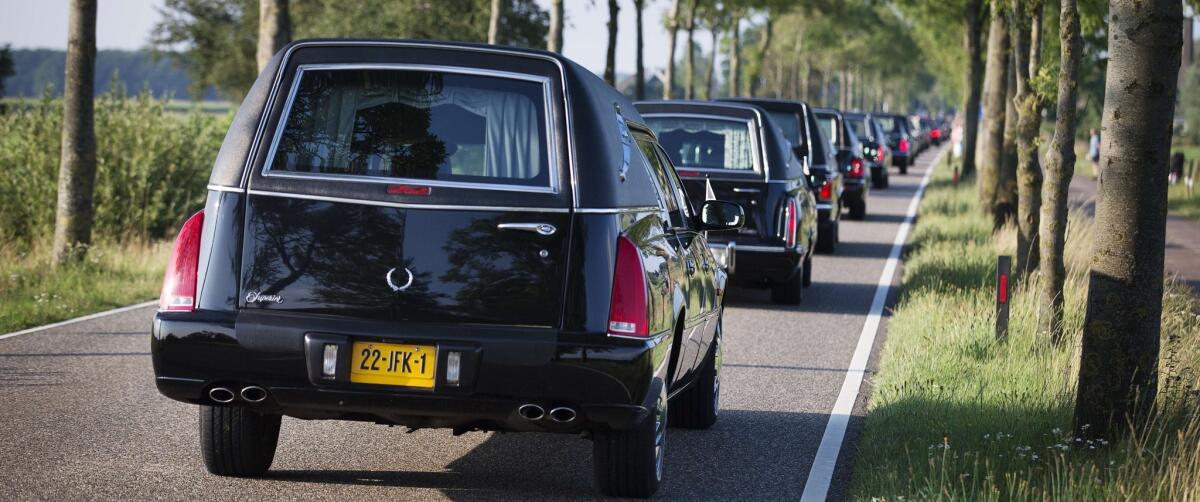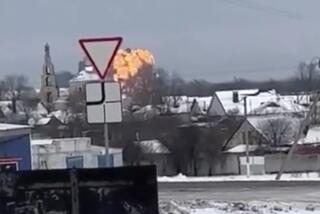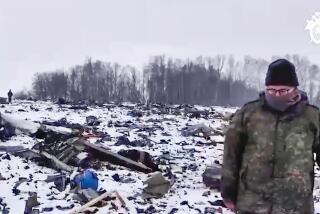Deal to secure Malaysia Air crash site founders as fighting continues

- Share via
Reporting from Kiev, Ukraine — An apparent agreement between the Malaysian government and pro-Russia separatists to secure the crash zone of Malaysia Airlines Flight 17 has come to naught as fighting continued in the area of eastern Ukraine where the jet went down.
Malaysian Prime Minister Najib Razak said Sunday he had reached an agreement with Oleksandr Boroday, one of the self-proclaimed leaders of the so-called Donetsk People’s Republic, to allow investigators to reach and explore the site unharmed.
But just a few hours later, a delegation of about 30 unarmed Dutch investigators, accompanied by international monitors, said they were turning back from a mission to examine the crash because the area remained too dangerous.
“We can’t control the risks,” a spokesman for the monitoring group, the Organization for Security and Cooperation in Europe, said after the investigation team reached the city of Donetsk near the crash site.
Ukrainian officials said Sunday they continued to make gains in fighting in the area against the separatists. A spokesman for Ukraine’s National Security and Defense Council said that with advances north of Donetsk and in other areas, the army has now seized two-thirds of the territory controlled by separatists at the start of the conflict.
The fighting also scuttled, at least temporarily, a plan by Australia to dispatch a team of as many as several dozen unarmed officers to investigate the crash zone.
Razak’s announcement had offered reason for optimism because of Malaysia’s previous success in extracting concessions from the separatists, who control the area. Negotiations in recent days produced a pledge from Boroday to turn over the plane’s flight data recorders, which were then given to Malaysian representatives at a pageant-filled ceremony.
Part of the issue with the crash-site negotiations, analysts say, is that there are several factions among the separatists, and even a good-faith effort by one group to cease fighting might not be honored by another.
There is also a strategic disincentive for separatists to halt fighting in the crash area, a swath of territory considered crucial because it links the group’s western front with potential supply points in areas near the Russian border in the east.
Further muddying the waters is the fact that the line between areas considered inside and outside the crash zone is extremely thin; the central battleground of Donetsk, for instance, lies just a few miles from the western edge of the site, and shelling around the city may compromise the safety of investigators even if technically taking place outside it.
The site remains inaccessible to investigators 10 days after Flight 17 was shot down by a missile believed fired from separatist-controlled territory. Anecdotal reports have said that remains of some of those aboard and wreckage from the jetliner still sit at the site, though separatists have sifted through and carted off some of the material.
The Ukrainian government said it does not wish to conduct a more wholesale military operation at the crash site because doing so, though securing the area, would compromise much of the evidence any investigation would need to preserve.
“If you do that, all the traces will be disrupted,” Ukraine Foreign Minister Pavlo Klimkin told CNN on Sunday when asked about a military intervention specifically aimed at securing the site.
More to Read
Sign up for Essential California
The most important California stories and recommendations in your inbox every morning.
You may occasionally receive promotional content from the Los Angeles Times.














